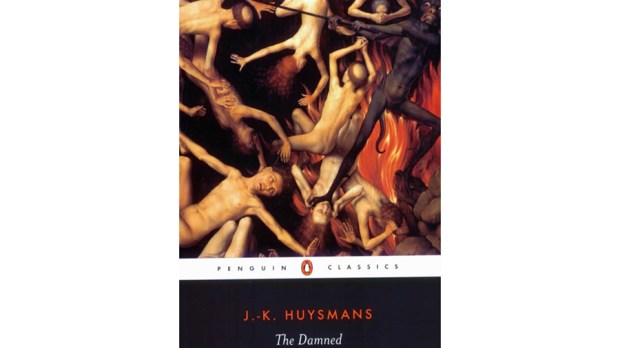As the years have gone by, I have come to see that one of my favorite liturgical moments of the Easter season is that moment when the faithful renew their baptismal promises; rather than recite the Nicene Creed together as a congregation, the people gathered profess their faith by affirmatively answering the articles of the faith addressed to them by the priest.
Before the articles of faith are asked, however, the congregation is first called upon to renounce the workings of evil. The first two of these questions, “Do you reject Satan? And all his empty show?” are the ones that have been particularly on my mind this season.
It’s worth noting that the phrasing of the question is not “do you deny Satan” but rather “do you reject Satan.” The distinction reminds us that we recognize Satan’s existence, and seek to turn away from his influence.
John Allen, Jr. reports on a talk recently given by Cardinal Gerhard Ludwig Müller, in which he discussed Pope Francis’s frequent references to the devil:
“Pope Francis has the courage to speak of the devil,” Müller said.
“If Benedict would have said what Francis says today about the devil, he would have been called retrograde and medieval. But our pope has the charisma to say these things: the devil exists, he’s at work and is very evil, and whoever welcomes his suggestions is guilty.”
In a previous article, I wrote about how the Holy Father has encouraged the faithful to read Robert Hugh Benson’s apocalyptic novel Lord of the World. In that book, a world that denies the supernatural is portrayed as a place in which the devil more easily gains power by exploiting our hopes and fears.
After reading Lord of the World, I took up Là-Bas (“The Damned”) by late 19th century French novelist J. K. Huysmans on the recommendation of a friend. Where Benson shows the advent of the Antichrist as an apocalyptic geopolitical event that results in the establishment of a “humanitarian” world government at war with the Church, Huysmans portrays a more intimate depiction of Satanic activity.
The story concerns a writer named Durtal who is disaffected by a “naturalism” in contemporary art and literature. He turns away from the art and political life of the late 19th century to the intensely supernatural and mystical worldview of the Middle Ages by writing a biography of the infamous Gilles de Rais, the 15th-century comrade-in-arms of St. Joan of Arc who was later tried for heresy, sorcery, and child murder.
Through his conversations with his friends des Hermies, a medical doctor, and Carhaix, the bell-ringer in the church of Saint-Sulpice in Paris, Durtal hears about alchemy, sorcery, and spells, and he learns that these practices, including even Black Masses, are not things of ancient times, but are in fact happening in obscurity in contemporary Paris.
Durtal begins an affair with the alluringly sulfurous Madame Chantelouve, the wife of a Catholic author who specializes in writing hagiographies. As he learns about the life and crimes of Gilles de Rais, he comes also to learn that there is more to Chantelouve than her air of respectability: she has, in fact, been involved in Satanic worship and had once been the lover of the wicked Canon Docre, a rogue priest who celebrates the Satanic Black Mass in a vacant convent in the Parisian suburbs. Durtal persuades Chantelouve to take him to observe a Black Mass, which Huysmans describes in lurid detail, after which Durtal ends the affair.
The noteworthy paradox in the story is the mystical power and supernatural faith of the Satanists: Gilles de Rais in the course of his alchemy and Satanic rituals calls upon priests to tend to his associates who are gravely injured during their demonic rituals; Chantelouve fills out her social circle with priests and tells Durtal of her frequent practice of going to confession.
Where Benson depicts a world with clear delineations between good and evil, Huysmans shows a battle between good and evil within the hearts of those who recognize the supernatural while the broader, outside world is disbelieving and corrupt. In turning away from Chantelouve, Durtal follows in the steps of his subject de Rais, who, though guilty of the most heinous of crimes, offers a sincere confession and is executed subsequent to being fully restored to communion with the Church; the novel ends with Durtal and his friends, once again gathered with Carhaix in his bell-tower apartment, discussing the possibility of accepting faith. Though often bleak and frequently explicit to the point of luridness in its detail, Là-Bas ends with this hope of repentance and restoration in sight, reminding the reader that no matter how far one has fallen, one can always turn to God’s mercy anew and reject Satan and all his works.
Colin O’Brienworks in the communications department of the United States Conference of Catholic Bishops and periodically updates his personal blog, Fallen Sparrow.

